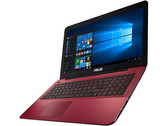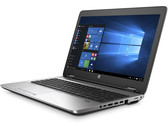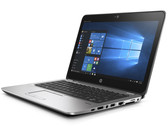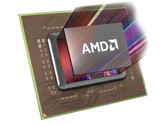
Asus X555DA (A10-8700P, FHD) Laptop Review
AMD A10-8700P | AMD Radeon R6 (Carrizo) | 15.60" | 2.1 kg

The AMD Radeon R6 (Carrizo) is an integrated graphics card in the low-end Carrizo APUs. At launch in mid 2015 the R6 was used in the AMD A10-8700P and A8-8600P with 384 GCN shaders and 720 resp. 800 MHz clock rate (Boost?). Depending on the configured TDP (ranging from 12 to 35 Watt) and used main memory (up to DDR3-2133 in dual channel mode supported) the performance can differ greatly.
Architecture and Features
The Radeon R6 is using the third generation GCN architecture (sometimes also called GCN 1.2) similar to the desktop Tonga chip. Therefore, it offers DirectX 12 (FL 12_0) hardware support and advanced color compression that leads to 5-7% improvement in games. Furthermore, the shaders can be used with Mantle, OpenGL and OpenCL. HSA 1.0 is supported to easily run code on CPU and GPU cores together.
The improved video decoder UVD 6 (Unified Video Decoder) is now able to decode HVEC / H.265 in up 4K in hardware. Furthermore, the VCE (Video Codec Engine) was improved for faster transcodes of H.264.
More information on architecture and features of the Carrizo chips can be found in our launch article.
Performance
The gaming performance of the integrated R6 depends on the configured TDP (12 - 35 Watt) of the chip. The difference from a 15 Watt A8 to a 35 Watt A10 e.g. can be 49% (3DMark 11, see scores below). Demanding games like Evolve or Far Cry 4 will struggle to achieve fluent frame rates. However, less demanding games like Counter-Strike: GO may even run in high detail settings (see the Kaveri R7 GPU for benchmarks).
Power Consumption
Depending on the configured TDP the chip may be used in thin and light machines (12 - 20 Watt range) or normal sized laptops (35 Watt TDP).
Radeon R (Carrizo) Series
| ||||||||||
| Codename | Carrizo | |||||||||
| Architecture | GCN 1.2/2.0 | |||||||||
| Pipelines | 384 - unified | |||||||||
| Core Speed | 800 (Boost) MHz | |||||||||
| Memory Bus Width | 64/128 Bit | |||||||||
| Shared Memory | yes | |||||||||
| API | DirectX 12 (FL 12_0), OpenGL 4.4 | |||||||||
| Power Consumption | 12-35 Watt | |||||||||
| Transistor Count | 2.4 Billion | |||||||||
| technology | 28 nm | |||||||||
| Features | UVD 6, VCE | |||||||||
| Notebook Size | medium sized | |||||||||
| Date of Announcement | 04.06.2015 | |||||||||
| ||||||||||||||||||||||||
The following benchmarks stem from our benchmarks of review laptops. The performance depends on the used graphics memory, clock rate, processor, system settings, drivers, and operating systems. So the results don't have to be representative for all laptops with this GPU. For detailed information on the benchmark results, click on the fps number.




































For more games that might be playable and a list of all games and graphics cards visit our Gaming List





HP ProBook 655 G3 Z2W19EA: AMD Pro A10-8700B, 15.60", 2.3 kg
External Review » HP ProBook 655 G3 Z2W19EA
Toshiba Satellite L50D-C-19D: AMD A10-8700P, 15.60", 2 kg
External Review » Toshiba Satellite L50D-C-19D
HP EliteBook 755 G3: AMD Pro A10-8700B, 15.60", 1.9 kg
External Review » HP EliteBook 755 G3
Toshiba Satellite L50D-C-13G: AMD A10-8700P, 15.60", 2.2 kg
External Review » Toshiba Satellite L50D-C-13G
HP Envy 15-ah00sa: AMD A10-8700P, 15.60", 2.2 kg
External Review » HP Envy 15-ah00sa
» Comparison of GPUs
Detailed list of all laptop GPUs sorted by class and performance.
» Benchmark List
Sort and restrict laptop GPUs based on performance in synthetic benchmarks.
» Notebook Gaming List
Playable games for each graphics card and their average FPS results.
Top 10 Laptops
Multimedia, Budget Multimedia, Gaming, Budget Gaming, Lightweight Gaming, Business, Budget Office, Workstation, Subnotebooks, Ultrabooks, Chromebooks
under 300 USD/Euros, under 500 USD/Euros, 1,000 USD/Euros, for University Students, Best Displays
Top 10 Smartphones
Smartphones, Phablets, ≤6-inch, Camera Smartphones